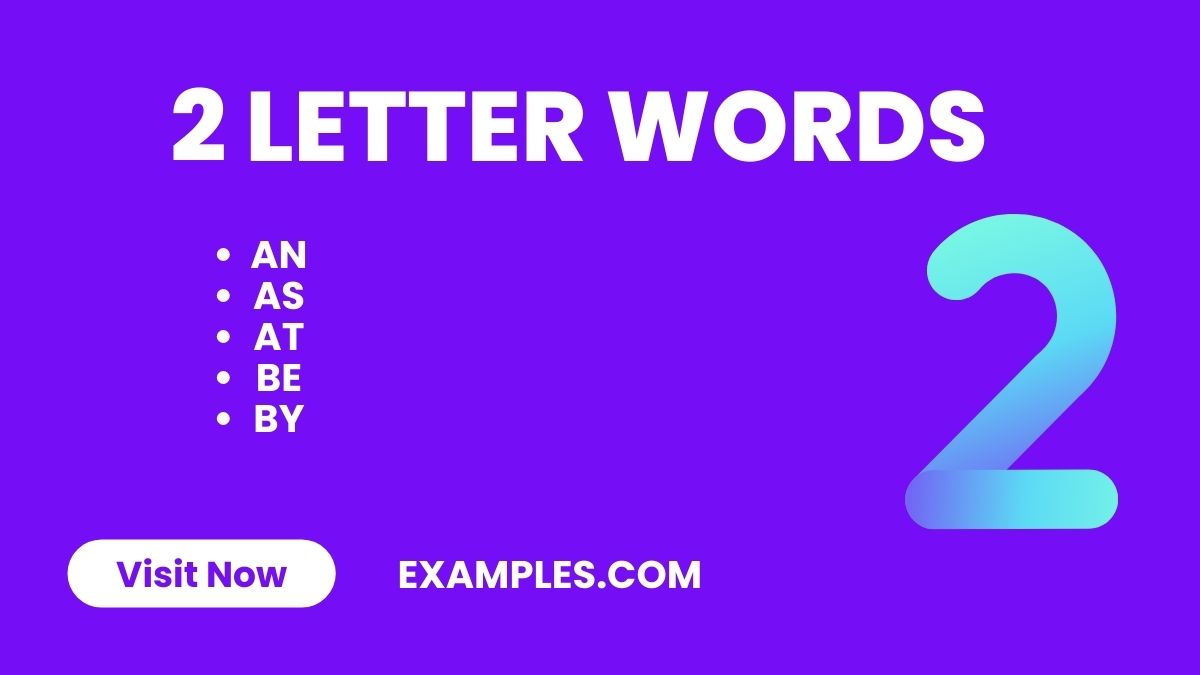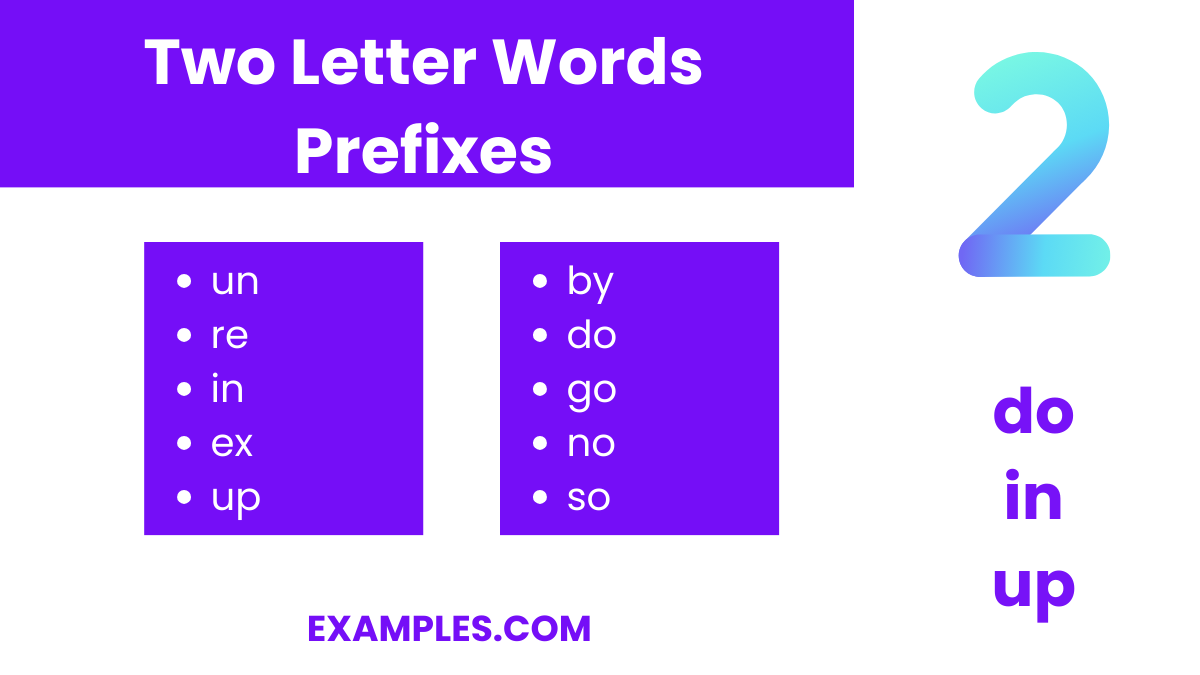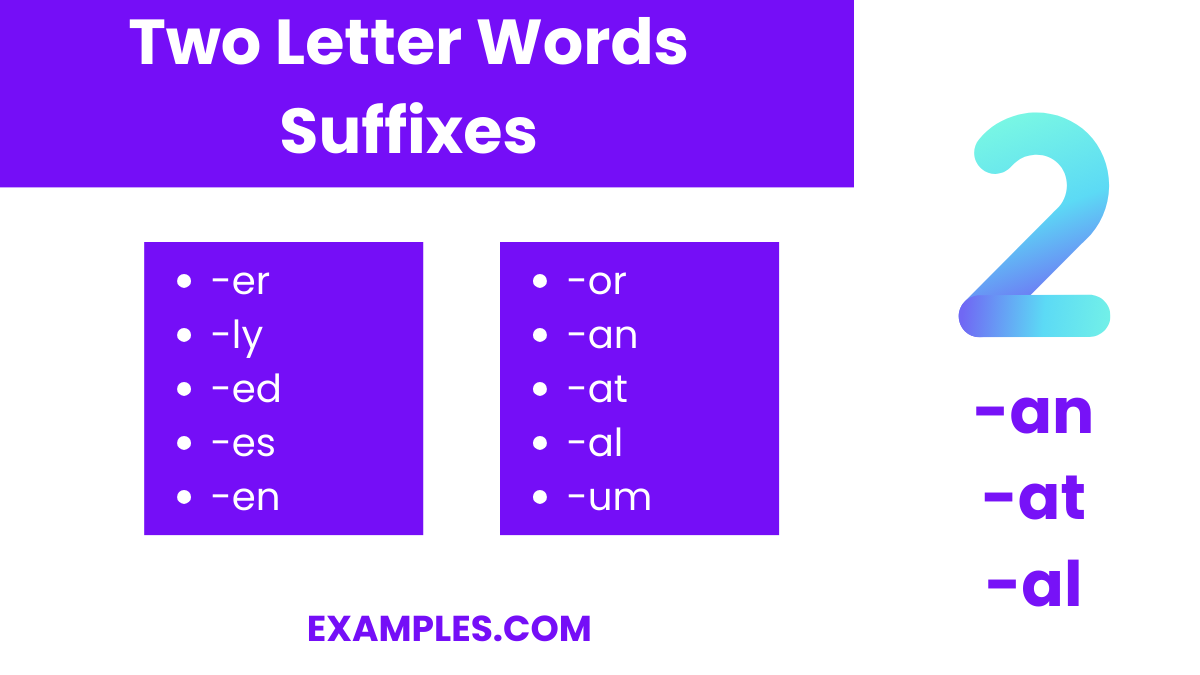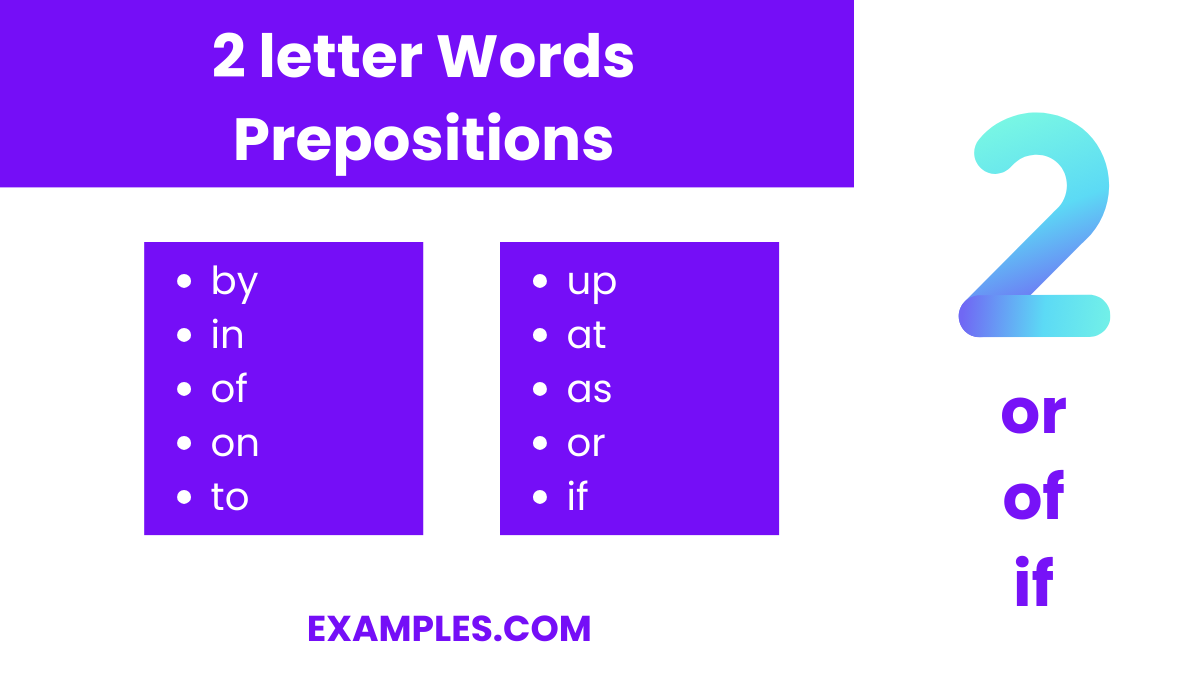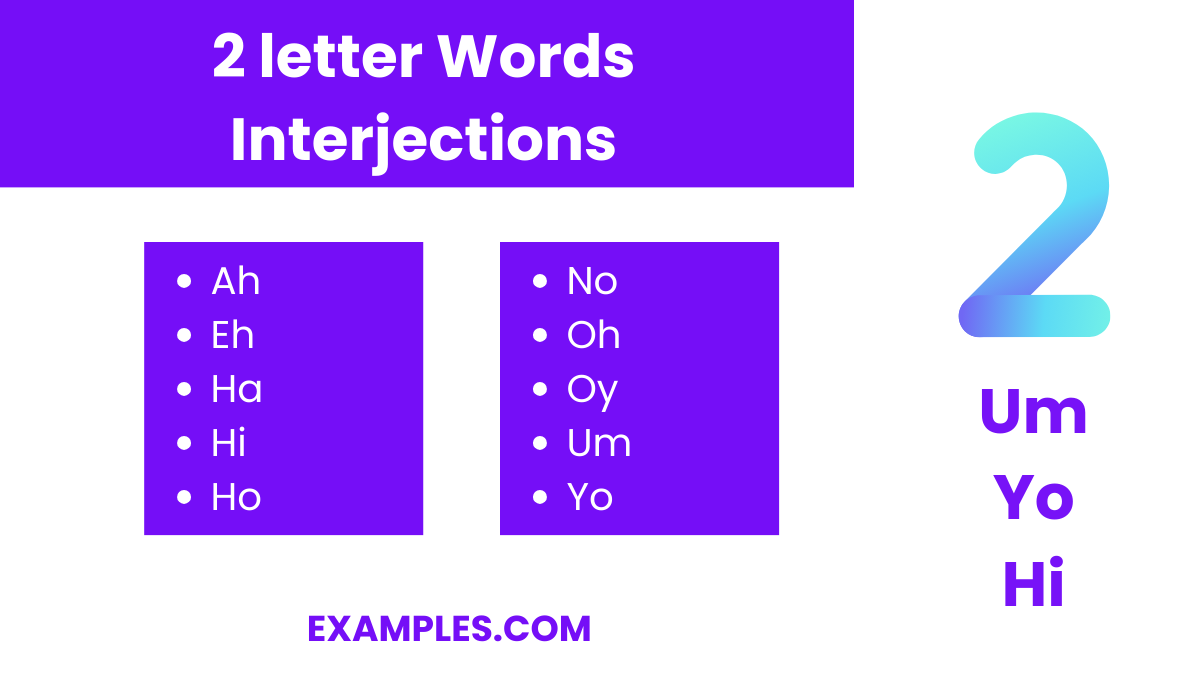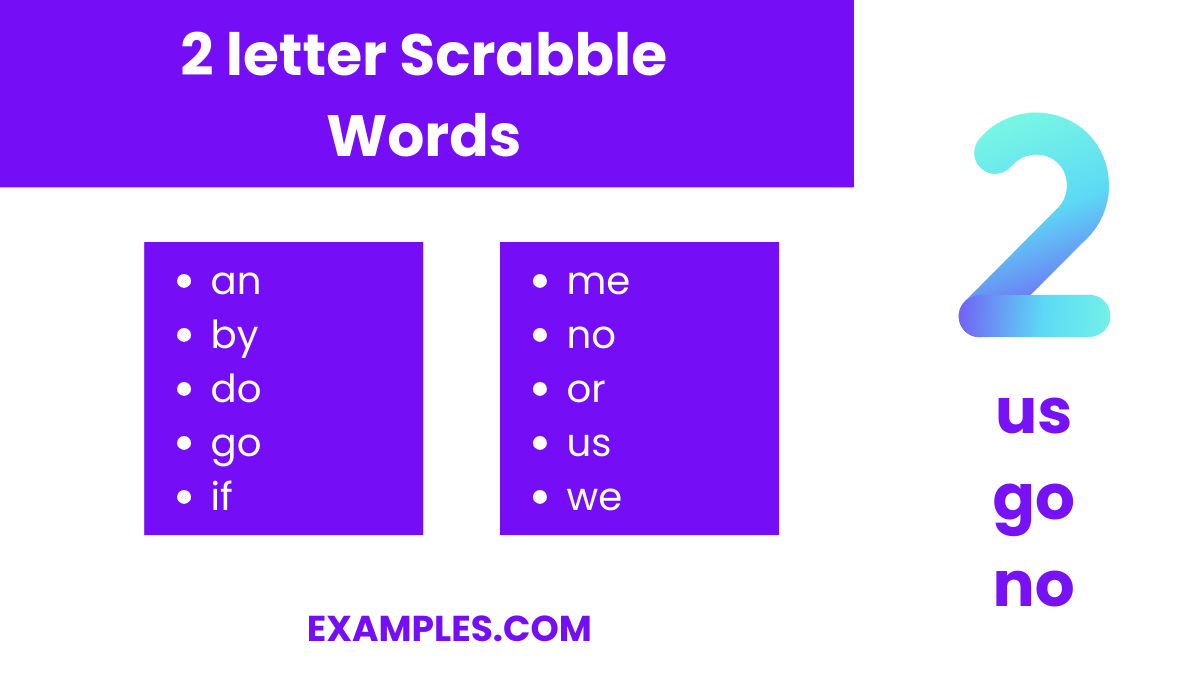450+ 2 Letter Words List, Meaning, PDF
In the expansive universe of the English language, 2-letter words hold a special place, serving as the essential building blocks of communication and strategic gameplay. These compact yet powerful components can dramatically enhance your expression in writing and speech, while also proving to be invaluable allies in word games like Scrabble and Crosswords. This guide shines a spotlight on these miniature marvels, inviting you to explore their significance and versatility. Embrace the simplicity and depth these two-letter combinations offer, as we delve into examples that exemplify their utility and charm.
Most Commonly Used Two Letter Words
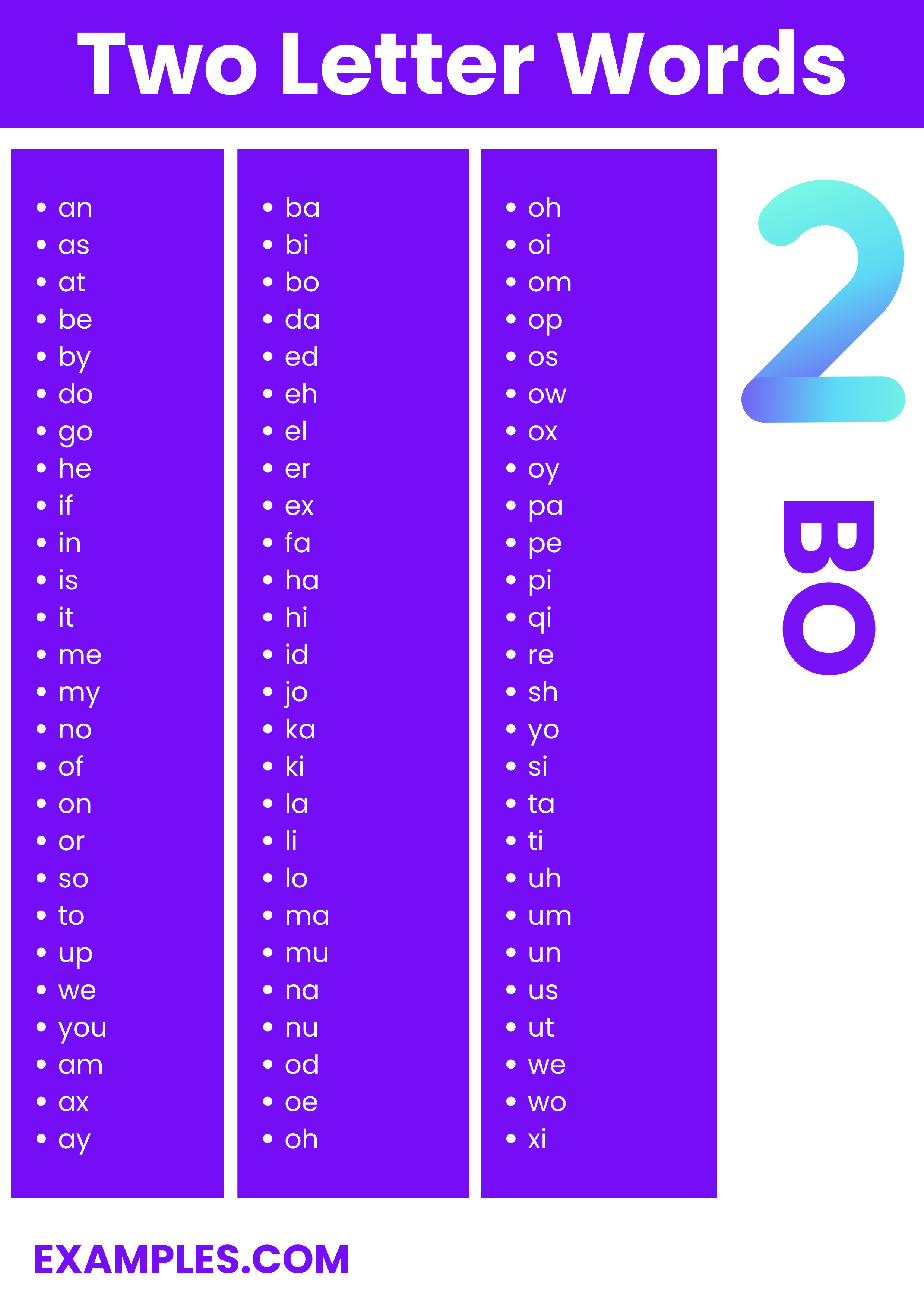
| an | my | ba | jo | oi | si |
| as | no | bi | ka | om | ta |
| at | of | bo | ki | op | ti |
| be | on | da | la | os | uh |
| by | or | ed | li | ow | um |
| do | so | eh | lo | ox | un |
| go | to | el | ma | oy | us |
| he | up | er | mu | pa | ut |
| if | we | ex | na | pe | we |
| in | you | fa | nu | pi | wo |
| is | am | ha | od | qi | xi |
| it | ax | hi | oe | re | xu |
| me | ay | id | oh | sh | ya |
Two Letter Words Prefixes
Dive into the intriguing world of two-letter word prefixes, an essential component of the English language that significantly alters the meaning of words to which they are added. These diminutive linguistic tools are powerful enough to transform the context and connotation of terms, enhancing both vocabulary and comprehension. Ideal for students, writers, and language enthusiasts, understanding these prefixes can unlock new dimensions of word formation and usage. Whether you’re crafting compelling content, decoding complex texts, or simply aiming to enrich your linguistic skills, grasping the significance of these prefixes is invaluable. In this guide, we explore ten two-letter word prefixes, each serving as a cornerstone for myriad words, enriching the English language with versatility and depth.
- un-: Not; the opposite of. It turns words into their negatives, like “unhappy” meaning not happy.
- re-: Again; back. It indicates repetition or restoration, as in “rewrite” meaning to write again.
- in-: Not; into. When added before certain words, it negates them, such as “inactive,” or means into, as in “insert.”
- ex-: Out of; from. It denotes former status or change from a state, as in “ex-president.”
- up-: Above; higher. Used in informal terms to indicate an increase or improvement, as in “upgrade.”
- by-: Secondary; aside. It signifies something subsidiary or aside, as in “bypass.”
- do-: Additive; to do. Used in rare contexts to imply doing, as in “doable.”
- go-: Pertaining to going. Found in colloquial or dialectal usage, as in “golucky.”
- no-: Not; without. It indicates absence or prohibition, as in “no-fault.”
- so-: Thus; in this manner. Used to form adjectives or adverbs, as in “so-called.”
Two Letter Suffixes
Dive into the linguistic nuances of the English language with our exploration of two-letter suffixes, the tiny yet mighty tail-ends that transform base words into new forms with added meanings. These diminutive linguistic elements pack a punch, extending the versatility and expressiveness of our vocabulary. Ideal for students, writers, and language enthusiasts, understanding these suffixes is key to mastering the art and science of English word formation. Whether it’s creating adjectives, denoting professional titles, or forming nouns and verbs, two-letter suffixes are fundamental in morphological constructions, enriching text with precision and clarity. Our guide not only highlights their importance but also offers a glimpse into the transformative power they wield in word structure. Embrace this journey through ten pivotal two-letter suffixes, each a building block to linguistic fluency.
- -er: Used to form comparative adjectives and adverbs, indicating a higher degree or quantity (e.g., faster, stronger).
- -ly: Converts adjectives to adverbs, signifying the manner of an action (e.g., quickly, softly).
- -ed: Marks the past tense or past participle of regular verbs (e.g., walked, jumped).
- -es: Forms the plural of nouns ending in -s, -ss, -sh, -ch, -x, or -z (e.g., boxes, wishes).
- -en: Turns adjectives into verbs, meaning to make or become (e.g., deepen, shorten); also used to form the plural of some nouns (e.g., oxen).
- -or: Indicates a person or thing performing a specific action, often used in job titles or roles (e.g., actor, editor).
- -an: Used to form adjectives and nouns indicating association, belonging, or origin (e.g., American, urban).
- -at: Forms nouns indicating a person engaged in an activity, or a collective group (e.g., diplomat, senate).
- -al: Turns verbs into adjectives, suggesting relating to or characterized by (e.g., personal, central).
- -um: Forms singular nouns from Latin origin, indicating a thing or entity (e.g., spectrum, medium)
2 Letter Words Conjunctions
Dive into the core of concise communication with our exploration of 2-letter word conjunctions, a pivotal element in crafting seamless sentences. Conjunctions, even as brief as two letters, play an indispensable role in linking thoughts, ideas, and clauses, underscoring the efficiency and rhythm of language. These tiny linguistic tools are mighty in function, facilitating a smooth flow of words and enhancing readability. Ideal for writers, poets, and avid readers, this collection not only enriches your vocabulary but also sharpens your writing style. Let’s unveil the compact powerhouses of conjunctions, revealing how these minuscule words weave complexity into communication with elegance and precision. Discover the significance of each, and how they contribute to the art of eloquent expression in English.
- as: Used to indicate similarity or a type of comparison.
- if: Introduces a conditional clause, suggesting a possible situation.
- or: Presents an alternative or choice between different options.
- so: Indicates a result or consequence of an action.
- by: Used to identify the agent performing an action, often seen in passive voice constructions.
- an: Although primarily an article, in some dialects and contexts, it can function similarly to “and” for poetic or stylistic purposes.
- do: Can serve a conjunctive role in asking questions or creating emphasis, especially in dialects or older English.
- go: In certain contexts, especially colloquial or dialectal, it can link actions or suggest sequence, albeit less traditionally.
- no: Besides its primary use as a negative, it can sometimes function to connect contrasting ideas in a concise manner.
- us: Not a conjunction in the traditional sense, but in creative or colloquial use, it might link concepts or subjects inclusively
2 letter Words Prepositions
In the vast expanse of the English language, prepositions play a pivotal role, crafting the relational dynamics between words within sentences. Among these, 2-letter words that serve as prepositions are especially noteworthy for their brevity and frequency of use. These compact connectors weave complexity into communication, illustrating direction, location, time, and manner with succinct elegance. Ideal for learners, writers, and linguistic aficionados, understanding these minuscule masters of context is essential. Below, we spotlight 10 such prepositions, each a testament to the power of precision in language. Dive into this curated list, where brevity meets depth, enhancing your comprehension and use of English prepositions.
- by: Indicating the means or agency through which something happens; “sent by mail.”
- in: Denoting presence or inclusion within a place or medium; “located in the box.”
- of: Expressing the relationship between a part and a whole; “a slice of pie.”
- on: Referring to a position atop or supported by something; “resting on the table.”
- to: Indicating direction towards a point, place, or situation; “going to the store.”
- up: Indicating movement toward a higher position; “climbed up the ladder.”
- at: Specifying a point in time or a location; “meet at noon.”
- as: Used to indicate a role, function, or quality; “working as a teacher.”
- or: Used to link alternatives or to indicate a synonymous or equivalent expression; “tea or coffee.”
- if: Introducing a conditional clause; “leave if you must.”
2-Letter Interjections
Delve into the expressive world of 2-letter interjections, the smallest snippets of language that pack a punch in daily communication. These tiny linguistic marvels are essential in conveying emotions, reactions, or responses, often in an instant and without the need for elaborate sentences. Perfect for adding flavor to dialogue in writing, enhancing text messages, or spicing up everyday conversations, understanding these interjections can significantly enrich your expressive toolkit. Whether you’re a writer looking to capture authentic dialogue, a language learner aiming to sound more natural, or simply a lover of words, this guide will introduce you to some of the most impactful 2-letter interjections in the English language. Explore their meanings and learn how to deploy them effectively to add realism and emotional depth to your communication.
- Ah: Expresses realization or acceptance.
- Eh: Used to express a question, surprise, or request for repetition.
- Ha: Expresses surprise, joy, or triumph.
- Hi: A friendly greeting.
- Ho: Used to express surprise or joy, or to call attention to something.
- No: Used to express refusal or denial.
- Oh: Expresses surprise, disappointment, or pain.
- Oy: Expresses dismay or exasperation, common in Yiddish influence.
- Um: Indicates hesitation or thinking.
- Yo: Used to attract attention or as a greeting
2 Letter Scrabble Words
Dive into the strategic depths of Scrabble with our guide to essential 2-letter words that can significantly boost your game. Mastering these concise yet powerful words is a game-changer, offering you the flexibility to adapt and thrive in various situations. Whether you’re a seasoned player aiming to sharpen your skills or a newcomer eager to make your mark, understanding these 2-letter words enriches your strategic arsenal, enabling you to capitalize on opportunities and navigate challenges with ease.
- an – Used before words that begin with a vowel sound.
- by – Near or next to; a preposition to indicate the creator of something.
- do – A verb to indicate an action.
- go – To move or travel to a place.
- if – A conjunction used to introduce a conditional clause.
- me – The object form of the first-person pronoun.
- no – Used to make a negative response.
- or – Used to link alternatives.
- us – The object form of the pronoun ‘we’.
- we – The subject pronoun for the first person plural
Examples of Two Letter Words in Sentences
Two-letter words, though small, play a crucial role in the structure and coherence of sentences in the English language. These diminutive linguistic elements are powerhouses of meaning, helping to connect, enhance, and clarify ideas with efficiency. They are essential for creating succinct expressions and are particularly valuable in crafting precise and impactful sentences. Whether you’re engaging in creative writing, academic work, or everyday communication, mastering the use of two-letter words can significantly improve your language skills. Below, we illustrate their importance with examples, showcasing how these tiny words contribute to the richness and versatility of English.
- He is my brother.
- Do it now.
- Go up the stairs.
- I will see you at noon.
- She can sing as well as dance.
- By the lake, we sat down.
- They walked in silence.
- No one knew the answer.
- On Sunday, we rest.
- Is it to be or not to be?
How To Teach Common Two Letter Words For Kindergarten?
Teaching two-letter words to kindergarteners can be effective and fun with the right strategies. Here’s a simplified approach:
1. Phonics First
Start with the sounds of each letter and gradually introduce simple two-letter words, like “an” and “it”.
2. Visual Aids
Use flashcards and a word wall to visualize and reinforce the words.
3. Interactive Activities
Engage in games that involve matching words with pictures and use letter blocks to build words.
4. Technology
Incorporate educational apps focused on phonics and word recognition.
5. Daily Practice
Include short, daily sessions of word practice and use songs to make learning enjoyable.
6. Read Together
Read books with two-letter words, asking the child to identify the words they recognize.
7. Celebrate Achievements
Provide positive feedback and rewards to motivate learning.
8. Fun Learning
Keep the atmosphere light and enjoyable to foster a love for reading.
Teaching two-letter words to kindergarteners is a crucial step in their early literacy journey. By incorporating phonics, visual aids, interactive activities, and daily reading practices in a fun and engaging manner, educators and parents can lay a strong foundation for reading skills. Celebrating every small achievement encourages a lifelong love for learning and reading in young learners.



